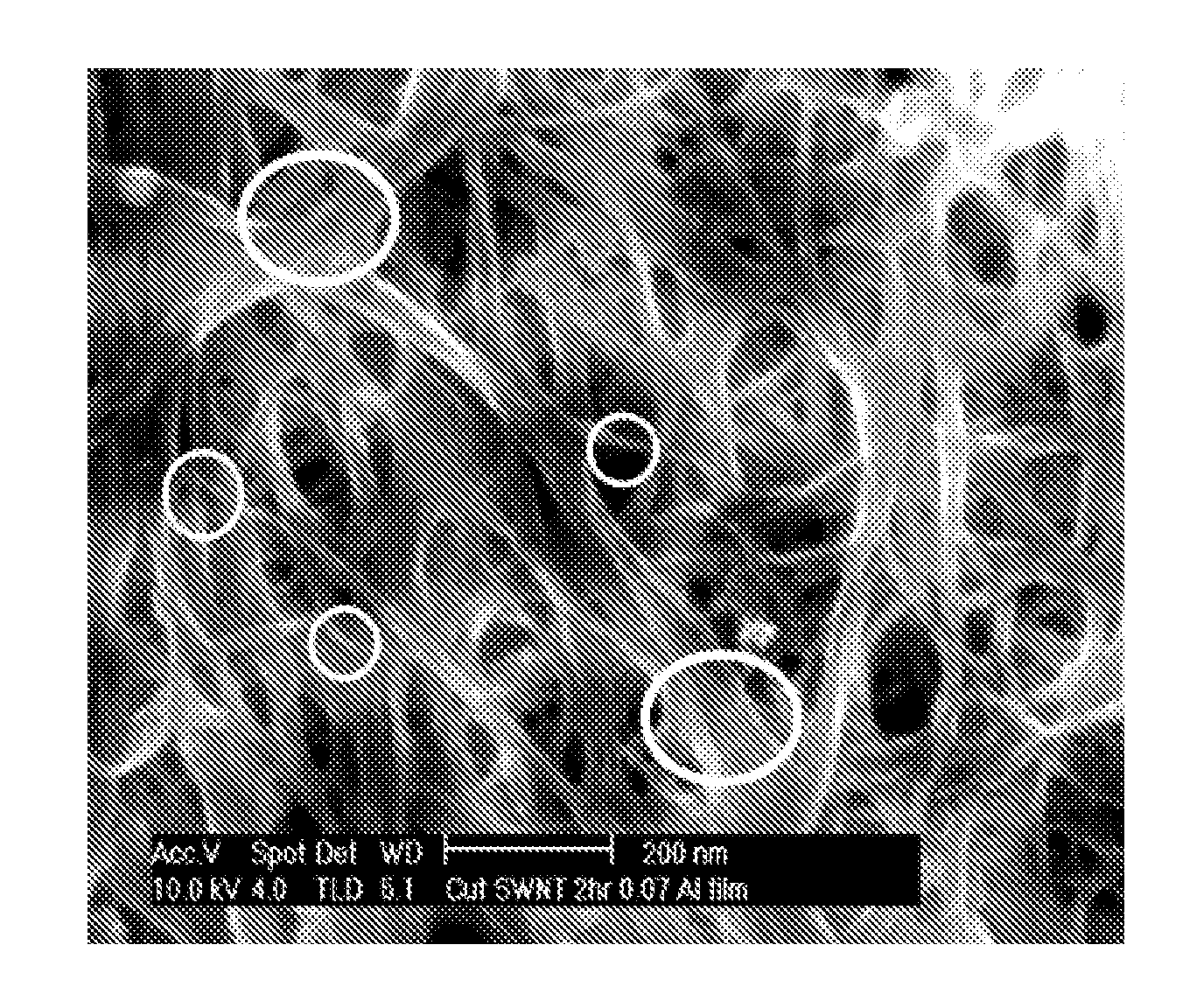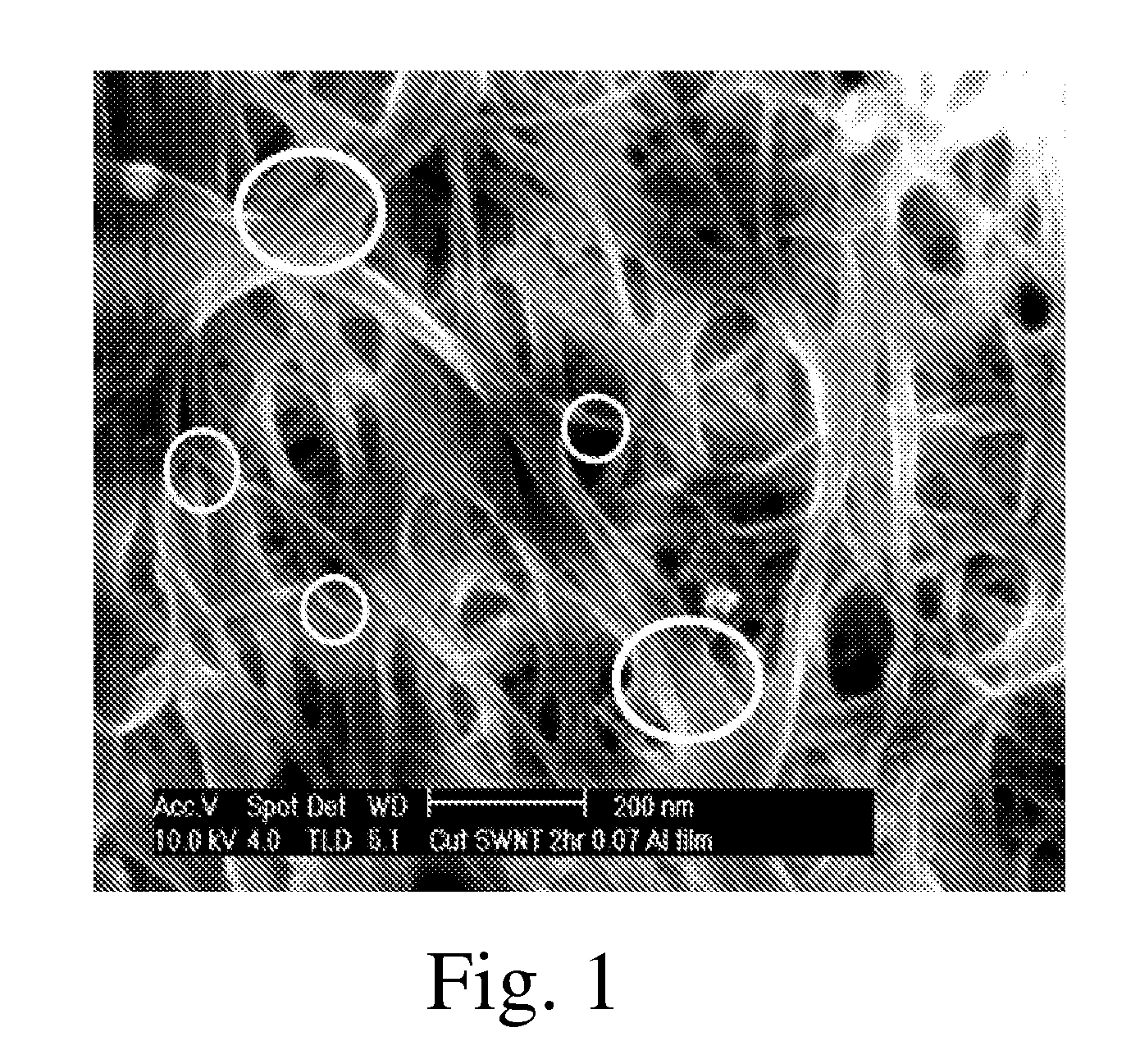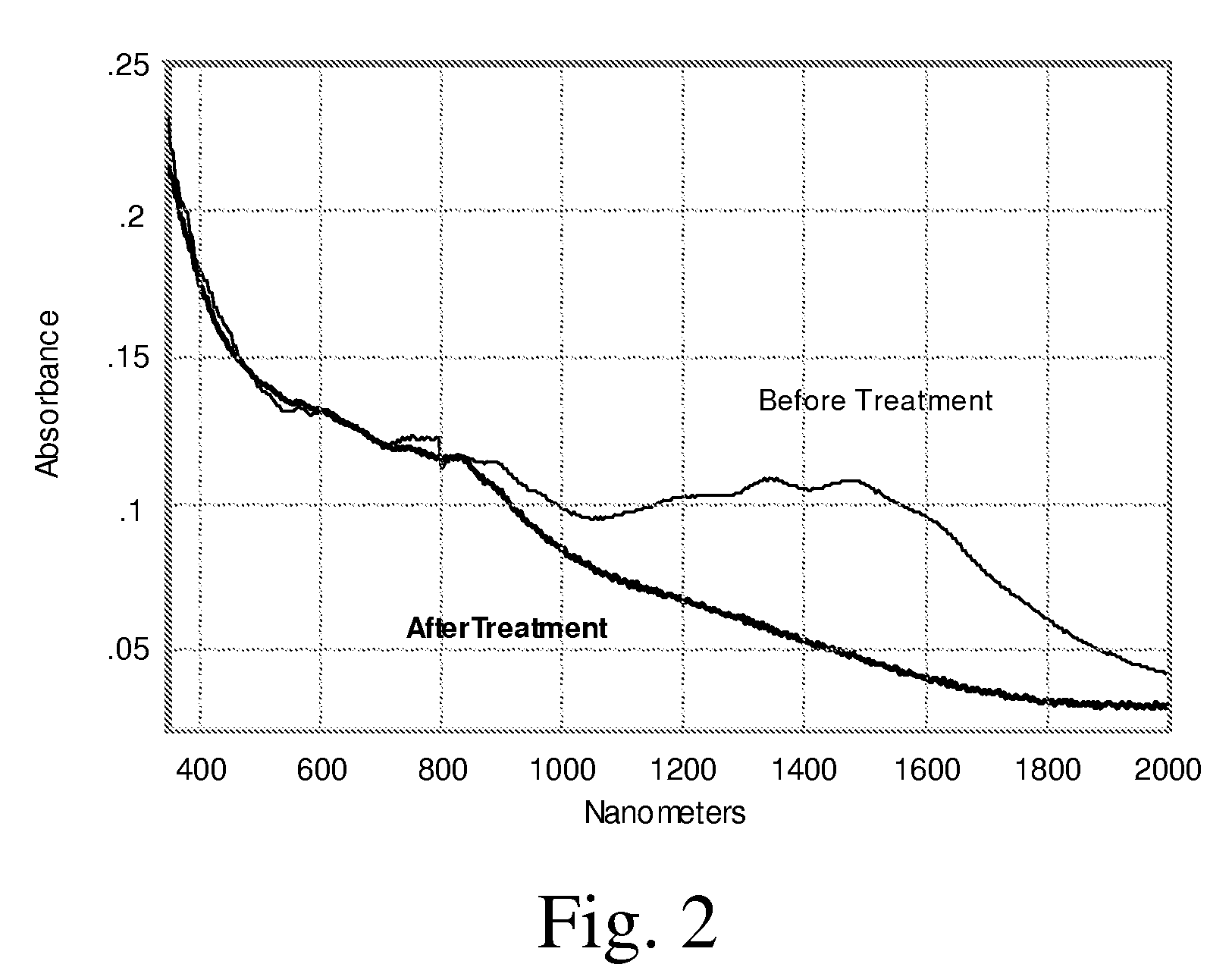Modified Carbon Nanotubes and Methods of Forming Carbon Nanotubes
a carbon nanotube and carbon nanotube technology, applied in the direction of electrically conductive paints, conductors, capacitors, etc., can solve the problems of prohibitively long reaction time for use in line, less effective treatment of larger diameter swnt, etc., to improve the work function of cnt surfaces, improve near infrared (nir) transmittance, and reduce junction resistance of cnt networks
- Summary
- Abstract
- Description
- Claims
- Application Information
AI Technical Summary
Benefits of technology
Problems solved by technology
Method used
Image
Examples
example 1
[0050]HiPco SWNT (CNI, Purified Grade) were dispersed in 0.62 wt % sodium dodecylbenzene sulfonate in D2O by tiphorn sonication. The concentration of nanotubes in the dispersion was 5.5 mg / L. Transparent thin films were deposited on substrates by one of two methods.
[0051]Film Method 1. The dispersion (6 g) was passed through a 0.02 μm Anodisc filter and washed with water. The resulting CNT mat was released from the filter by dipping the coated Anodisc filter into water, causing the CNT mat to release from the filter and float on the water. The floating CNT mat was picked-up with a glass substrate.
[0052]Film Method 2. The dispersion (6 g) was passed through a 0.02 μm mixed cellulose ester filter and washed with water. The resulting CNT mat was transferred to PET by: placing the CNT mat in contact with a sheet of PET, applying heat (80° C.) and pressure (<10,000 psi) for 15 minutes, removing the mixed cellulose ester from the PET by carefully peeling or swelling with acetone, and then...
example 2
[0069]Gas Treatment 2. A vial containing 1 mg of DWNTs prepared by catalytic decomposition of methane (obtained from Professor CJ Lee at Korea University) was placed in a large glass vacuum tube and dried at 300° C. overnight. The system was placed under vacuum while still hot and held overnight. The flask was opened to atmosphere and 1.5 mL of SOCl2 was added to the bottom of the flask. The system was degassed by three successive freeze-pump-thaw cycles, then closed under vacuum, brought to room temperature, and held for 3 days. The sample was removed from the flask and a small amount was dispersed in dichlorobenzene by tiphorn sonication for 20 minutes. The resulting dispersion was dark and translucent. Two samples were prepared by passing 7 mL or 3 mL of the dispersion on a 0.02 μm Anodisc filter. A control sample was also prepared from dichlorobenzene dispersion.
[0070]The sheet resistance was evaluated after air drying for 2 days. The samples were then placed in 10% water in ace...
example 3
[0072]Glass slides were coated with a thin layer (<1 Mm) of PET by spin coating from solution. Arc SWNTs were deposited on the coated layer using Film Method 1.
[0073]Glass slides were coated with a thin layer (<1 Mm) of trimethylolpropane triacrylate (Sartomer SR351 HP) by spin coating from solution. The coating was UV-cured. DWNT (Helix, CVD) were dispersed in 0.62 wt % SDBS in H2O by tiphorn sonication, and then deposited on the coated glass slides using Film Method 1.
[0074]Both samples were treated with thionyl chloride using Liquid Treatment 1.
[0075]The presence of polymeric storage layers in contact with CNT film improves the doping effect. Compared to neat glass substrates, coated substrates yield up to 2 fold greater decrease in the sheet resistance. Thionyl chloride is capable of diffusing into the polymer structures without dissolving, degrading, or yellowing the polymer. It is believed that the thionyl chloride can be trapped in these layers, where it can continue to inter...
PUM
| Property | Measurement | Unit |
|---|---|---|
| Fraction | aaaaa | aaaaa |
| Time | aaaaa | aaaaa |
| Thickness | aaaaa | aaaaa |
Abstract
Description
Claims
Application Information
 Login to View More
Login to View More - R&D
- Intellectual Property
- Life Sciences
- Materials
- Tech Scout
- Unparalleled Data Quality
- Higher Quality Content
- 60% Fewer Hallucinations
Browse by: Latest US Patents, China's latest patents, Technical Efficacy Thesaurus, Application Domain, Technology Topic, Popular Technical Reports.
© 2025 PatSnap. All rights reserved.Legal|Privacy policy|Modern Slavery Act Transparency Statement|Sitemap|About US| Contact US: help@patsnap.com



